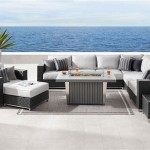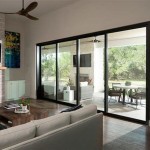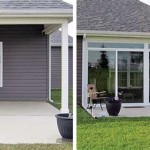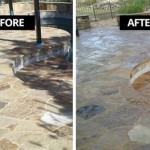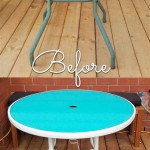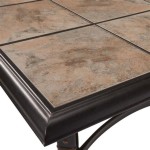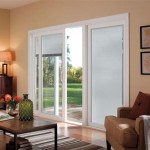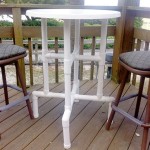DIY Brick Patio Fireplace: A Comprehensive Guide
Constructing a brick patio fireplace is an ambitious yet rewarding DIY project, transforming an outdoor space into a cozy and inviting gathering area. This article provides a comprehensive guide to building a durable and aesthetically pleasing brick fireplace, covering planning, material selection, construction techniques, and essential safety considerations.
Planning and Design Considerations
Before commencing any construction, meticulous planning is crucial for a successful outcome. The initial stage involves determining the fireplace's location, size, and design. Local building codes and regulations must be consulted to ensure compliance with setback requirements, height restrictions, and other applicable standards. Failure to adhere to these regulations can result in costly rework or even legal penalties.
The intended use of the fireplace is another important factor. Will it primarily serve as a source of warmth, a cooking surface, or a decorative element? The answer to this question will influence the dimensions of the firebox, the inclusion of features like a cooking grate or smoker box, and the overall design aesthetic. Consider the prevailing wind direction to minimize smoke drifting into seating areas. A well-placed fireplace enhances the ambiance of the patio while minimizing potential discomfort.
The design should complement the existing architecture of the house and the overall landscape. Brick can be selected to match or contrast with the house's exterior. Consider incorporating design elements such as arches, corbels, or decorative brick patterns to enhance the visual appeal. A detailed sketch or digital rendering of the proposed fireplace is invaluable for visualizing the final product and identifying potential design flaws early in the process. Accurate measurements are essential throughout the planning phase to ensure proper fit and functionality.
Foundation requirements are paramount. The fireplace's weight necessitates a solid and stable foundation to prevent settling and cracking. A concrete pad or reinforced concrete slab is typically required, depending on the size and weight of the structure. The foundation should extend beyond the footprint of the fireplace to provide adequate support. Consult with a structural engineer if you are unsure about the load-bearing capacity of your soil or the complexity of the design.
Material Selection and Preparation
The selection of appropriate materials is crucial for the durability and longevity of the brick patio fireplace. Firebrick is essential for lining the firebox due to its ability to withstand high temperatures. Common brick can be used for the exterior walls and chimney. Mortar selection is equally important; Type S mortar is recommended for its high compressive strength and resistance to weathering. It is critical to use mortar specifically designed for brickwork, as other types of mortar may not be suitable for the demanding conditions of a fireplace.
In addition to brick and mortar, other necessary materials include concrete for the foundation, gravel for drainage, reinforcing steel (rebar) for the foundation, and flue liners for the chimney. Flue liners prevent the escape of harmful gases and protect the chimney from heat damage. The size and type of flue liner should be chosen based on the size of the firebox and the height of the chimney. A chimney cap is recommended to prevent rainwater and debris from entering the chimney, which can damage the flue and reduce its efficiency.
Before commencing construction, ensure that all materials are readily available and properly stored. Brick should be protected from moisture to prevent efflorescence, a white powdery deposit that can mar the appearance of the brickwork. Mortar should be stored in a dry location to prevent it from setting prematurely. Having all the necessary materials on hand will streamline the construction process and minimize delays. Ordering slightly more materials than estimated is advisable to account for breakage or waste.
Tools required for the project include a brick hammer, brick chisel, masonry saw, level, plumb bob, mortar trowel, mortar mixing box, wheelbarrow, shovel, measuring tape, and safety glasses. Proper safety gear, including gloves, safety glasses, and a dust mask, is essential to protect yourself from injury during the construction process. A power mixer for mortar can significantly reduce the labor involved, especially for larger projects. Ensure that all tools are in good working order before starting the project.
Construction Techniques and Safety
The construction process begins with pouring the concrete foundation. A trench is dug to the required depth, and gravel is placed at the bottom for drainage. Reinforcing steel is then placed within the trench to provide added strength to the concrete. Concrete is poured into the trench and leveled. Allow the concrete to cure for at least seven days before proceeding with the brickwork. Curing ensures that the concrete reaches its maximum strength.
The first course of brick should be laid on a bed of mortar, ensuring that it is level and square. A level and plumb bob are essential for maintaining alignment throughout the construction process. Subsequent courses are laid in a staggered pattern, overlapping the joints between the bricks. This interlocking pattern provides greater structural integrity. Maintain a consistent mortar joint thickness throughout the project. Typically, a 3/8-inch mortar joint is recommended.
The firebox is constructed using firebrick and fireclay mortar. Fireclay mortar is specifically designed to withstand the high temperatures of the firebox. Ensure that the firebrick is properly bonded to the surrounding brickwork. The firebox dimensions should be appropriate for the intended use of the fireplace. Consider incorporating a smoke shelf above the firebox to improve draft and prevent smoke from entering the room. The smoke shelf is a horizontal projection that deflects downdrafts and helps to create a consistent upward flow of smoke.
The chimney is constructed using common brick and Type S mortar. Flue liners are installed inside the chimney to protect the brickwork from heat damage and prevent the escape of harmful gases. The chimney height should be sufficient to provide adequate draft. Building codes typically specify minimum chimney heights based on the roof pitch and the proximity to other structures. A chimney cap is installed at the top of the chimney to prevent rainwater and debris from entering. Proper chimney construction is crucial for the safe and efficient operation of the fireplace.
Mortar joints should be tooled to create a consistent and aesthetically pleasing finish. Several tooling options are available, including concave, V-shaped, and flush joints. The choice of tooling depends on personal preference and the desired aesthetic. Excess mortar should be removed from the brick surface before it hardens. Cleaning the brickwork regularly during construction will prevent mortar stains from becoming permanent.
Safety is paramount throughout the construction process. Wear safety glasses, gloves, and a dust mask to protect yourself from injury. Use caution when working with power tools. Support scaffolding adequately to prevent falls. Never work alone, and ensure that someone is nearby in case of an emergency. Be aware of your surroundings and take breaks when needed. Proper planning and adherence to safety guidelines will ensure a safe and successful DIY brick patio fireplace project.
After the mortar has cured, the fireplace can be seasoned by burning small fires initially to allow the materials to adjust gradually to the heat. This reduces the risk of cracking. Inspect the fireplace regularly for signs of damage or deterioration. Repair any cracks or other damage promptly to prevent further problems.
:max_bytes(150000):strip_icc()/outdoor-fire-pit-ideas-00ba790bf8f14670a9e78ecdad266497.jpg?strip=all)
31 Diy Fire Pit Ideas And Plans For Your Backyard

How To Build An Outdoor Fireplace Today S Creative Life

Outdoor Fireplace With Bench Seating W Tips From A Professional Mason

Diy Outdoor Fireplace Ideas

Small Outdoor Brick Fireplaces Related Post From Diy Fireplace Plans

How To Build An Outdoor Fireplace

Pima Ii Diy Outdoor Fireplace Construction Plan

Diy Outdoor Fireplace Kit Fremont Makes Hardscaping And Easy

How To Build An Outdoor Fireplace Step By Guide Buildwithroman

Stonetutorials Living Stone Masonry
Related Posts

